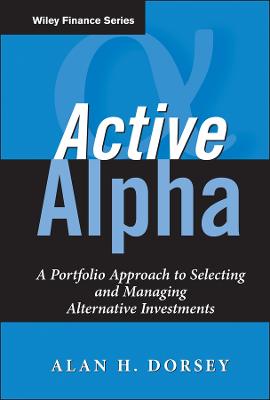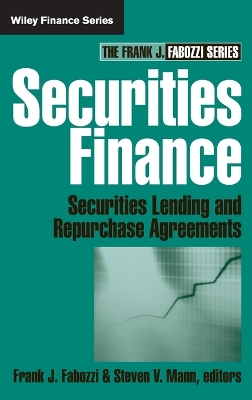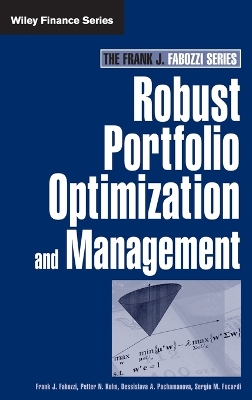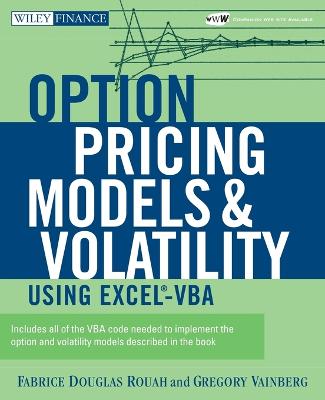Credit Derivatives
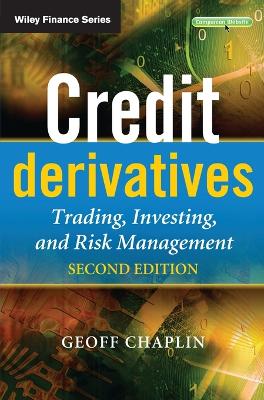 portes grátis
portes grátis
Credit Derivatives
Trading, Investing, and Risk Management
Chaplin, Geoff
John Wiley & Sons Inc
03/2010
416
Dura
Inglês
9780470686447
15 a 20 dias
772
Descrição não disponível.
Preface to the First Edition xvii
Preface to the Second Edition xix
Acknowledgements xxi
Disclaimer xxiii
Table of Spreadsheet Examples and Software xxvii
About the Author xxix
Part I Credit Background and Credit Derivatives 1
1 Credit Debt and Other Traditional Credit Instruments 3
1.1 Bonds and Loans; Libor Rates and Swaps; 'REPO' and General Collateral Rates 3
1.1.1 Bonds and Loans 3
1.1.2 BBA Libor and Swaps 4
1.1.3 Collateralised Lending and Repo 4
1.1.4 Repo as a Credit Derivative 6
1.2 Credit Debt Versus 'Risk-Free' Debt 6
1.3 Issue Documents, Seniority and the Recovery Process 6
1.3.1 Issue Documents and Default 6
1.3.2 Claim Amount 7
1.3.3 The Recovery Process and Recovery Amount 8
1.3.4 Sovereign versus Corporate Debt 9
1.4 Valuation, Yield and Spread 10
1.5 Buying Risk 10
1.6 Marking to Market, Marking to Model and Reserves 11
1.7 The 'Credit Crunch' and Correlation 12
1.8 Parties Involved in the Credit Markets and Key Terminology 13
2 Default and Recovery Data; Transition Matrices; Historical Pricing 15
2.1 Recovery: Ultimate and Market-Value-Based Recovery 15
2.1.1 Ultimate Recovery 15
2.1.2 Market Recovery 16
2.1.3 Recovery Rates and Industry Sector 18
2.1.4 Recovery and Default Rates and the Economic Cycle 18
2.1.5 Modelling Recovery Rates 18
2.2 Default Rates: Rating and Other Factors 21
2.3 Transition Matrices 21
2.4 'Measures' and Transition Matrix-Based Pricing 22
2.5 Spread Jumps and Spread Volatility Derived from Transition Matrices 26
2.6 Adjusting Transition Matrices 27
3 Asset Swaps and Asset Swap Spread; z-Spread 29
3.1 'Par-Par' Asset Swap Contracts 29
3.1.1 Contract Description and Hedging 29
3.1.2 Hedging 29
3.1.3 Default of the Reference Name 30
3.2 Asset Swap Spread 30
3.3 Maturity and z-Spread 30
3.4 Callable Asset Swaps; 'Perfect' Asset Swaps 32
3.4.1 Callable Asset Swaps 33
3.4.2 'Perfect' Asset Swaps 33
3.5 A Bond Spread Model 33
4 Liquidity, the Credit Pyramid and Market Data 35
4.1 Bond Liquidity 35
4.2 The Credit Pyramid 35
4.3 Engineered and Survey Data 37
4.3.1 Survey Data 37
4.3.2 Engineered Data 38
4.4 Spread and Rating 39
5 Traditional Counterparty Risk Management 41
5.1 Vetting 41
5.2 Collateralisation and Netting 41
5.3 Additional Counterparty Requirements for Credit Derivative Counterparties 42
5.4 Internal Capital Charge 42
6 Credit Portfolios and Portfolio Risk 43
6.1 VaR and counterpartyVaR 43
6.2 Distribution of Forward Values of a Credit Bond 43
6.3 Correlation and the Multi-Factor Normal (Gaussian) Distribution 45
6.4 Correlation and the Correlation Matrix 46
7 Introduction to Credit Derivatives 49
7.1 Products and Users 49
7.1.1 'Traditional' Credit Instruments 49
7.1.2 'Single Name' Credit Derivatives 49
7.1.3 Credit-Linked Notes 50
7.1.4 Portfolio Credit Derivatives 50
7.2 Market Participants and Market Growth 51
Part II Credit Default Swaps and other Single Name Products 55
8 Credit Default Swaps; Product Description and Simple Applications 57
8.1 CDS Product Definition 57
8.1.1 Contract Description and Example 57
8.1.2 Market CDS Quotes and Premium Payment 58
8.1.3 Related Products 59
8.1.4 CDS on Loans: LCDS 60
8.2 Documentation 60
8.2.1 ISDA Documentation and Insurance Contract Differences 60
8.2.2 Reference Obligations, 'Markit RED' and CreditIDs 63
8.3 Credit Triggers for Credit Derivatives 65
8.3.1 Credit Events 65
8.3.2 Restructuring 66
8.4 CDS Applications and Elementary Strategies 67
8.4.1 Single Names 67
8.4.2 Sector/Portfolio Trades 68
8.4.3 Income Generation 69
8.4.4 Regulatory Capital Reduction 70
8.5 Counterparty Risk: PFE for CDS 71
8.6 CDS Trading Desk 71
8.6.1 Mechanics of Transacting a CDS Deal 71
8.6.2 Trade Monitoring, Credit Events, Unwinds 72
8.6.3 CDS Desk Interactions and Organisation 73
8.7 CDS Contract and Convention Changes 2009 73
8.7.1 Credit Derivatives: Review 73
8.7.2 Overview of Recent Changes 74
8.7.3 Contract Changes 74
8.7.4 Convention Changes 79
9 Valuation and Risk: Basic Concepts and the Default and Recovery Model 81
9.1 The Fundamental Credit Arbitrage - Repo Cost 81
9.2 Default and Recovery Model; Claim Amount 82
9.2.1 Claim Amount 82
9.2.2 Recovery Modelling 83
9.2.3 Hazard (Default) Rate Model 85
9.2.4 Choice of Hazard Rate Function/Interpolation Process 85
9.3 Deterministic Default Rate Model 87
9.3.1 CDS Valuation 88
9.3.2 Accrued Interest and the Delivery Option 90
9.3.3 CDS Under Constant Hazard Rate 91
9.3.4 Up-front Premiums 91
9.3.5 Bond Valuation 91
9.3.6 Bond Price Under a Constant Hazard Rate 92
9.3.7 Limiting Cases of the Bond Price 92
9.3.8 Risky Zero Coupon Bonds 93
9.3.9 CDS and Bond Sensitivities 93
9.4 Stochastic Default Rate Model; Hazard and Pseudo-Hazard Rates 94
9.5 Calibration to Market Data 97
9.5.1 Calibrating to CDSs and to Bonds 97
9.5.2 Implied Hazard Rates 98
9.5.3 Calibrating to Bonds: Multiple Solutions for the Hazard Rate 98
9.5.4 Calibrating to Bonds: Implied Recovery and Hazard Rates 98
9.5.5 Implied Hazard Rate Curve and No-Arbitrage 101
9.5.6 Syndicated Loans 101
9.6 CDS Data/Sources 102
9.6.1 Survey Data 102
9.6.2 Data Engineering 104
9.7 Model Errors and Tests 105
9.7.1 Recovery Assumption 105
9.7.2 Interest and Hazard Rate Correlation 106
9.7.3 Reference Name and Counterparty Hazard Rate Correlation 106
9.7.4 Interpolation Assumptions, and the Pseudo-Hazard Rate versus Stochastic Hazard Rate 108
9.8 CDS Risk Factors; Reserves and Model Risk 108
9.8.1 Captured and Hidden Risks 108
9.8.2 Limits 109
9.8.3 Reserves against Implementation Errors 109
9.8.4 Model Reserves 111
10 CDS Deal Examples 113
10.1 A CDS Hedged Against Another CDS 113
10.1.1 Cross-Currency Default Swap Pricing and Hedging 113
10.1.2 Back-to-Back Trades, Default Event Hedges and Curve Trades 118
10.1.3 Hedging Both Credit Event and Spread Risk Simultaneously 120
10.1.4 Seniority Mismatch 122
10.1.5 Trade Level Hedging and Book Basis Hedging 123
10.2 Introduction to Bond Hedging 124
10.2.1 Default Event Hedging 124
10.2.2 Spread Hedging 125
10.2.3 Convertible Bonds and Equity Risk 125
10.3 Hedge and Credit Event Examples 126
11 CDS/Bond Basis Trading 131
11.1 Bond Versus CDS: Liquidity 131
11.2 Bond Repo Cost 132
11.3 Bond Spread Measurement - z-Spread not Asset Swap Spread 133
11.4 Bond Price Impact 133
11.5 Embedded Options in Bonds and Loans 134
11.6 Delivery Option in CDSs 135
11.7 Payoff of Par 136
11.8 Trigger Event Differences 136
11.9 Embedded Repo Option 137
11.10 Putting it All Together 138
12 Forward CDS; Back-to-Back CDS, Mark to Market and CDS Unwind 139
12.1 Forward CDS 139
12.2 Mark-to-Market and Back-to-Back CDS 140
12.3 Unwind Calculation; Off-Market Trade Valuation and Hedging 141
12.4 'Double-Trigger CDS' 142
13 Credit-Linked Notes 145
13.1 CLN Set-Up; Counterparty or Collateral Risk 145
13.2 Embedded Swaps and Options 147
13.3 Costs 148
13.4 Applications 148
13.5 CLN Pricing 149
13.5.1 Basic Pricing 149
13.5.2 CLN Pricing Model 149
13.6 Capital Guaranteed Note 150
14 Digital or 'Fixed Recovery' CDS 155
14.1 Product Description 155
14.2 Pricing, Hedging, Valuation and Risk Calculations 155
14.2.1 Simple Pricing 155
14.2.2 Recovery Assumptions 156
14.2.3 Valuation and Hedging 156
14.3 Trigger Event Differences 157
15 Spread Options, Callable/Puttable Bonds, Callable Asset Swaps, Callable Default Swaps 159
15.1 Product Definitions 159
15.1.1 Vanilla Spread Options and Variations 159
15.1.2 Related Embedded Products 160
15.1.3 Bond Price Options 161
15.1.4 Applications 162
15.2 Model Alternatives and a Stochastic Default Rate Model for Spread Option Pricing 162
15.2.1 Model Approaches 162
15.2.2 Hazard Rate Tree 163
15.2.3 Callable High Yield Bonds 164
15.3 Sensitivities and Hedging 164
16 Total Return Swaps 167
16.1 Product Definition and Examples 167
16.2 Applications 167
16.3 Hedging and Valuation 168
16.3.1 Pricing and Hedging 168
16.3.2 Valuation 169
17 Single Name Book Management 171
17.1 Risk Aggregation 171
17.2 CreditVaR for CDSs 173
18 CDS and Simulation 175
18.1 The Poisson Model and Default Times 175
18.2 Valuation by Monte Carlo Simulation 175
18.3 Sensitivity 178
Part III Portfolio Products 181
19 Portfolio Product Types 183
19.1 Nth-to-Default Baskets 184
19.1.1 First-to-Default Product Definition and Example 184
19.1.2 Documentation and Takeovers 185
19.1.3 Second-(and Higher)-to-Default 187
19.1.4 Applications 187
19.2 'Synthetic' CDOs 188
19.2.1 Standard Indices: Markit iTraxx and Markit cdx 188
19.2.2 Index Options and Modelling Spread 192
19.2.3 CDO Structures on Standard Indices 194
19.2.4 Bespoke Synthetic CDOs 195
19.2.5 Managed Synthetic CDOs: Compliance Tests (OC and IC Tests; WARF; Diversity Score) and Substitutions 200
19.2.6 CDO Squared 203
19.2.7 Funded (CLN) and Unfunded (CDS) Tranches 205
19.2.8 Relationship to nth-to-Default 206
19.2.9 Applications 207
19.2.10 Portfolio Optimisation 208
19.3 Cashflow CDOs 210
19.3.1 Reference Pools 211
19.3.2 Income and Capital Waterfalls: Reserve Accounts 211
19.3.3 Funding and SPVs 213
19.3.4 Balance Sheet CDOs 215
19.3.5 Diversification and Risk Reduction Trades; Credit Bank 218
19.4 Credit Securitisations 220
19.5 Rating 222
19.6 Alternative Levered Credit Portfolio Products 222
19.6.1 Cppi 223
19.6.2 Cpdo 224
19.6.3 Advantages of Market Value CDS Products 226
20 The Normal Copula and Correlation 227
20.1 Default Time Correlation 227
20.1.1 Generating Correlated Default Times 227
20.1.2 Intuitive Understanding of Default Time Correlation 227
20.1.3 Implications of 100% Default Time Correlation 229
20.1.4 N2D, Zero Correlation Case - Exact Pricing and Hedging Formulas 230
20.1.5 N2D, 100% Correlation - Exact Pricing and Hedging Formulas 234
20.1.6 N2D, Recovery Uncertainty 235
20.2 Normal Copula 236
20.2.1 Generating Correlated Default Times under the Normal Copula 237
20.2.2 Correlation Types: Pairwise, Tag, Tranche/Compound and Base Correlation; Factor Correlation 238
20.2.3 Simulation Pricing 239
20.2.4 Variance Reduction Techniques 242
20.2.5 Semi-Closed Form (SCF) Pricing 242
20.3 Correlation 244
20.3.1 Sources of Correlation 244
20.3.2 Constraints: What Makes a Correlation Matrix? 245
20.3.3 Spread Correlation 246
20.3.4 Asset and Equity Correlation 247
20.3.5 Estimation from Historical Data 248
20.3.6 Factor Analysis and Factor Correlation; Tag Correlation 248
20.3.7 Impact on Hedging of Using Historical or Implied Correlations 251
20.3.8 Implied Correlation 251
21 Correlation in Practice 253
21.1 Tranche Correlation 253
21.1.1 Valuation and Key Features 253
21.1.2 Implied Tranche Correlation 256
21.1.3 CDS Curve Adjustment 257
21.1.4 Bid-Offer Impact 257
21.2 Base Correlation 257
21.2.1 Valuation and Key Features 258
21.2.2 Implied Base Correlation 259
21.2.3 Interpolating Base Correlation 260
21.3 Correlated Recoveries 261
21.4 Correlation Regime Change and Other Modelling Approaches 262
21.4.1 Stochastic Correlation: Regime Change Models 262
21.4.2 Spread Factor 263
22 Valuation and Hedging 265
22.1 Valuation Examples 265
22.1.1 F2D Baskets 265
22.1.2 CDO Pricing: Change of Correlation 265
22.1.3 CDO Pricing: Change of Tranching 267
22.1.4 CDO Pricing: Change of Underlying 268
22.1.5 CDO Pricing: Change of Maturity 269
22.1.6 Managed CDO: Substitution and Change of Subordination 269
22.2 Sensitivity Calculation and Hedging 270
22.2.1 Dynamic Hedging: Spread Risk 271
22.2.2 Static Hedging: Default Event Risk 277
22.2.3 Correlation Risk 279
22.2.4 Recovery Risk 280
22.2.5 Convexity Risks 281
22.3 Pricing More Complex Structures 282
22.3.1 CDO Squared 282
22.3.2 Cashflow CDOs 282
22.4 Model Errors and Tests; Alternative Models 284
22.4.1 Captured and Hidden Risks 284
22.4.2 Spread Models 284
22.4.3 Reserves 285
23 Alternative Copulas 289
23.1 Student's t-Distribution 289
23.2 Copulas in General 290
23.3 Archimedean Copulas: Clayton, Gumbel 291
23.4 Clayton at ? = 0 and ? = ? 293
23.5 Model Risk 293
24 Correlation Portfolio Management 297
24.1 Static and Dynamic Hedges 297
24.2 Correlation Book Management 298
24.3 CreditVaR and CounterpartyVaR 300
Part IV Default Swaps Including Counterparty Risk 303
25 Single Name CDS 303
25.1 Non-Correlated Counterparty 305
25.2 100% Correlation 306
25.3 Correlated Counterparty: Pricing and Hedging 308
25.4 Choice of Copula 309
25.5 Collateralised Deals and CDS Book Management 309
26 Counterparty CDSs 313
26.1 Pricing 313
26.2 Counterparty CDS (CCDS) Book Management 313
Part V Systems Implementation and Testing 317
27 Mathematical Model and Systems Validation 319
27.1 Testing Procedures 319
27.2 Implementation and Documentation 321
28 System Implementation 323
28.1 Anatomy of a CDO 323
28.1.1 Reference Pool Data 323
28.1.2 Tranche Data 324
28.1.3 Deal Details 324
28.2 Management 325
28.2.1 What is Happening? 325
28.2.2 What Has Happened? 326
28.2.3 What is Likely to Happen and What is the Worst that can Happen? 326
28.2.4 What Opportunities do I Have? 327
28.2.5 Reporting 328
28.2.6 Limits 328
28.3 Valuation 329
28.4 IT Considerations 331
28.4.1 Why are Credit Derivatives Different? 331
28.4.2 Spreadsheet 332
28.4.3 Software Application 332
28.4.4 Buy versus Build 333
Part VI the Credit Crisis 335
29 Cause and Effect: Credit Derivatives and the Crisis of 2007 337
29.1 The Credit Markets Pre-Crisis 337
29.1.1 Bank Motivation 337
29.1.2 Fixed Income Investors 338
29.1.3 Risk Traders versus Risk Absorbers 338
29.1.4 Structured Investment Vehicles 339
29.1.5 Market Liquidity 340
29.2 The Events of MID- 2007 341
29.2.1 Sub-prime Mortgages 341
29.2.2 Investor Impact 342
29.2.3 Bank Impact 343
29.2.4 The Failure of Lehman Brothers and the Bailout of AIG 345
29.3 Issues to be Addressed 346
29.3.1 A Different Rating Agency Process 346
29.3.2 Standardised Nomenclature for Credit Ratings 347
29.3.3 Keeping a Percentage of Originated Risk on Balance Sheet 348
29.3.4 Undrawn Credit Facility Capital Charge 348
29.3.5 The Future of CDOs 349
29.3.6 Mitigating the Negative Impact of Mark-to-Market 349
29.4 Market Clearing Mechanisms 350
29.4.1 Central Credit Counterparty 351
29.4.2 Centralised Clearing and Systemic Risk 351
29.4.3 A Dedicated CCP for CDSs Alone 352
29.4.4 Conclusions 353
Appendix Markit Credit and Loan Indices 355
References 363
Index 365
Preface to the Second Edition xix
Acknowledgements xxi
Disclaimer xxiii
Table of Spreadsheet Examples and Software xxvii
About the Author xxix
Part I Credit Background and Credit Derivatives 1
1 Credit Debt and Other Traditional Credit Instruments 3
1.1 Bonds and Loans; Libor Rates and Swaps; 'REPO' and General Collateral Rates 3
1.1.1 Bonds and Loans 3
1.1.2 BBA Libor and Swaps 4
1.1.3 Collateralised Lending and Repo 4
1.1.4 Repo as a Credit Derivative 6
1.2 Credit Debt Versus 'Risk-Free' Debt 6
1.3 Issue Documents, Seniority and the Recovery Process 6
1.3.1 Issue Documents and Default 6
1.3.2 Claim Amount 7
1.3.3 The Recovery Process and Recovery Amount 8
1.3.4 Sovereign versus Corporate Debt 9
1.4 Valuation, Yield and Spread 10
1.5 Buying Risk 10
1.6 Marking to Market, Marking to Model and Reserves 11
1.7 The 'Credit Crunch' and Correlation 12
1.8 Parties Involved in the Credit Markets and Key Terminology 13
2 Default and Recovery Data; Transition Matrices; Historical Pricing 15
2.1 Recovery: Ultimate and Market-Value-Based Recovery 15
2.1.1 Ultimate Recovery 15
2.1.2 Market Recovery 16
2.1.3 Recovery Rates and Industry Sector 18
2.1.4 Recovery and Default Rates and the Economic Cycle 18
2.1.5 Modelling Recovery Rates 18
2.2 Default Rates: Rating and Other Factors 21
2.3 Transition Matrices 21
2.4 'Measures' and Transition Matrix-Based Pricing 22
2.5 Spread Jumps and Spread Volatility Derived from Transition Matrices 26
2.6 Adjusting Transition Matrices 27
3 Asset Swaps and Asset Swap Spread; z-Spread 29
3.1 'Par-Par' Asset Swap Contracts 29
3.1.1 Contract Description and Hedging 29
3.1.2 Hedging 29
3.1.3 Default of the Reference Name 30
3.2 Asset Swap Spread 30
3.3 Maturity and z-Spread 30
3.4 Callable Asset Swaps; 'Perfect' Asset Swaps 32
3.4.1 Callable Asset Swaps 33
3.4.2 'Perfect' Asset Swaps 33
3.5 A Bond Spread Model 33
4 Liquidity, the Credit Pyramid and Market Data 35
4.1 Bond Liquidity 35
4.2 The Credit Pyramid 35
4.3 Engineered and Survey Data 37
4.3.1 Survey Data 37
4.3.2 Engineered Data 38
4.4 Spread and Rating 39
5 Traditional Counterparty Risk Management 41
5.1 Vetting 41
5.2 Collateralisation and Netting 41
5.3 Additional Counterparty Requirements for Credit Derivative Counterparties 42
5.4 Internal Capital Charge 42
6 Credit Portfolios and Portfolio Risk 43
6.1 VaR and counterpartyVaR 43
6.2 Distribution of Forward Values of a Credit Bond 43
6.3 Correlation and the Multi-Factor Normal (Gaussian) Distribution 45
6.4 Correlation and the Correlation Matrix 46
7 Introduction to Credit Derivatives 49
7.1 Products and Users 49
7.1.1 'Traditional' Credit Instruments 49
7.1.2 'Single Name' Credit Derivatives 49
7.1.3 Credit-Linked Notes 50
7.1.4 Portfolio Credit Derivatives 50
7.2 Market Participants and Market Growth 51
Part II Credit Default Swaps and other Single Name Products 55
8 Credit Default Swaps; Product Description and Simple Applications 57
8.1 CDS Product Definition 57
8.1.1 Contract Description and Example 57
8.1.2 Market CDS Quotes and Premium Payment 58
8.1.3 Related Products 59
8.1.4 CDS on Loans: LCDS 60
8.2 Documentation 60
8.2.1 ISDA Documentation and Insurance Contract Differences 60
8.2.2 Reference Obligations, 'Markit RED' and CreditIDs 63
8.3 Credit Triggers for Credit Derivatives 65
8.3.1 Credit Events 65
8.3.2 Restructuring 66
8.4 CDS Applications and Elementary Strategies 67
8.4.1 Single Names 67
8.4.2 Sector/Portfolio Trades 68
8.4.3 Income Generation 69
8.4.4 Regulatory Capital Reduction 70
8.5 Counterparty Risk: PFE for CDS 71
8.6 CDS Trading Desk 71
8.6.1 Mechanics of Transacting a CDS Deal 71
8.6.2 Trade Monitoring, Credit Events, Unwinds 72
8.6.3 CDS Desk Interactions and Organisation 73
8.7 CDS Contract and Convention Changes 2009 73
8.7.1 Credit Derivatives: Review 73
8.7.2 Overview of Recent Changes 74
8.7.3 Contract Changes 74
8.7.4 Convention Changes 79
9 Valuation and Risk: Basic Concepts and the Default and Recovery Model 81
9.1 The Fundamental Credit Arbitrage - Repo Cost 81
9.2 Default and Recovery Model; Claim Amount 82
9.2.1 Claim Amount 82
9.2.2 Recovery Modelling 83
9.2.3 Hazard (Default) Rate Model 85
9.2.4 Choice of Hazard Rate Function/Interpolation Process 85
9.3 Deterministic Default Rate Model 87
9.3.1 CDS Valuation 88
9.3.2 Accrued Interest and the Delivery Option 90
9.3.3 CDS Under Constant Hazard Rate 91
9.3.4 Up-front Premiums 91
9.3.5 Bond Valuation 91
9.3.6 Bond Price Under a Constant Hazard Rate 92
9.3.7 Limiting Cases of the Bond Price 92
9.3.8 Risky Zero Coupon Bonds 93
9.3.9 CDS and Bond Sensitivities 93
9.4 Stochastic Default Rate Model; Hazard and Pseudo-Hazard Rates 94
9.5 Calibration to Market Data 97
9.5.1 Calibrating to CDSs and to Bonds 97
9.5.2 Implied Hazard Rates 98
9.5.3 Calibrating to Bonds: Multiple Solutions for the Hazard Rate 98
9.5.4 Calibrating to Bonds: Implied Recovery and Hazard Rates 98
9.5.5 Implied Hazard Rate Curve and No-Arbitrage 101
9.5.6 Syndicated Loans 101
9.6 CDS Data/Sources 102
9.6.1 Survey Data 102
9.6.2 Data Engineering 104
9.7 Model Errors and Tests 105
9.7.1 Recovery Assumption 105
9.7.2 Interest and Hazard Rate Correlation 106
9.7.3 Reference Name and Counterparty Hazard Rate Correlation 106
9.7.4 Interpolation Assumptions, and the Pseudo-Hazard Rate versus Stochastic Hazard Rate 108
9.8 CDS Risk Factors; Reserves and Model Risk 108
9.8.1 Captured and Hidden Risks 108
9.8.2 Limits 109
9.8.3 Reserves against Implementation Errors 109
9.8.4 Model Reserves 111
10 CDS Deal Examples 113
10.1 A CDS Hedged Against Another CDS 113
10.1.1 Cross-Currency Default Swap Pricing and Hedging 113
10.1.2 Back-to-Back Trades, Default Event Hedges and Curve Trades 118
10.1.3 Hedging Both Credit Event and Spread Risk Simultaneously 120
10.1.4 Seniority Mismatch 122
10.1.5 Trade Level Hedging and Book Basis Hedging 123
10.2 Introduction to Bond Hedging 124
10.2.1 Default Event Hedging 124
10.2.2 Spread Hedging 125
10.2.3 Convertible Bonds and Equity Risk 125
10.3 Hedge and Credit Event Examples 126
11 CDS/Bond Basis Trading 131
11.1 Bond Versus CDS: Liquidity 131
11.2 Bond Repo Cost 132
11.3 Bond Spread Measurement - z-Spread not Asset Swap Spread 133
11.4 Bond Price Impact 133
11.5 Embedded Options in Bonds and Loans 134
11.6 Delivery Option in CDSs 135
11.7 Payoff of Par 136
11.8 Trigger Event Differences 136
11.9 Embedded Repo Option 137
11.10 Putting it All Together 138
12 Forward CDS; Back-to-Back CDS, Mark to Market and CDS Unwind 139
12.1 Forward CDS 139
12.2 Mark-to-Market and Back-to-Back CDS 140
12.3 Unwind Calculation; Off-Market Trade Valuation and Hedging 141
12.4 'Double-Trigger CDS' 142
13 Credit-Linked Notes 145
13.1 CLN Set-Up; Counterparty or Collateral Risk 145
13.2 Embedded Swaps and Options 147
13.3 Costs 148
13.4 Applications 148
13.5 CLN Pricing 149
13.5.1 Basic Pricing 149
13.5.2 CLN Pricing Model 149
13.6 Capital Guaranteed Note 150
14 Digital or 'Fixed Recovery' CDS 155
14.1 Product Description 155
14.2 Pricing, Hedging, Valuation and Risk Calculations 155
14.2.1 Simple Pricing 155
14.2.2 Recovery Assumptions 156
14.2.3 Valuation and Hedging 156
14.3 Trigger Event Differences 157
15 Spread Options, Callable/Puttable Bonds, Callable Asset Swaps, Callable Default Swaps 159
15.1 Product Definitions 159
15.1.1 Vanilla Spread Options and Variations 159
15.1.2 Related Embedded Products 160
15.1.3 Bond Price Options 161
15.1.4 Applications 162
15.2 Model Alternatives and a Stochastic Default Rate Model for Spread Option Pricing 162
15.2.1 Model Approaches 162
15.2.2 Hazard Rate Tree 163
15.2.3 Callable High Yield Bonds 164
15.3 Sensitivities and Hedging 164
16 Total Return Swaps 167
16.1 Product Definition and Examples 167
16.2 Applications 167
16.3 Hedging and Valuation 168
16.3.1 Pricing and Hedging 168
16.3.2 Valuation 169
17 Single Name Book Management 171
17.1 Risk Aggregation 171
17.2 CreditVaR for CDSs 173
18 CDS and Simulation 175
18.1 The Poisson Model and Default Times 175
18.2 Valuation by Monte Carlo Simulation 175
18.3 Sensitivity 178
Part III Portfolio Products 181
19 Portfolio Product Types 183
19.1 Nth-to-Default Baskets 184
19.1.1 First-to-Default Product Definition and Example 184
19.1.2 Documentation and Takeovers 185
19.1.3 Second-(and Higher)-to-Default 187
19.1.4 Applications 187
19.2 'Synthetic' CDOs 188
19.2.1 Standard Indices: Markit iTraxx and Markit cdx 188
19.2.2 Index Options and Modelling Spread 192
19.2.3 CDO Structures on Standard Indices 194
19.2.4 Bespoke Synthetic CDOs 195
19.2.5 Managed Synthetic CDOs: Compliance Tests (OC and IC Tests; WARF; Diversity Score) and Substitutions 200
19.2.6 CDO Squared 203
19.2.7 Funded (CLN) and Unfunded (CDS) Tranches 205
19.2.8 Relationship to nth-to-Default 206
19.2.9 Applications 207
19.2.10 Portfolio Optimisation 208
19.3 Cashflow CDOs 210
19.3.1 Reference Pools 211
19.3.2 Income and Capital Waterfalls: Reserve Accounts 211
19.3.3 Funding and SPVs 213
19.3.4 Balance Sheet CDOs 215
19.3.5 Diversification and Risk Reduction Trades; Credit Bank 218
19.4 Credit Securitisations 220
19.5 Rating 222
19.6 Alternative Levered Credit Portfolio Products 222
19.6.1 Cppi 223
19.6.2 Cpdo 224
19.6.3 Advantages of Market Value CDS Products 226
20 The Normal Copula and Correlation 227
20.1 Default Time Correlation 227
20.1.1 Generating Correlated Default Times 227
20.1.2 Intuitive Understanding of Default Time Correlation 227
20.1.3 Implications of 100% Default Time Correlation 229
20.1.4 N2D, Zero Correlation Case - Exact Pricing and Hedging Formulas 230
20.1.5 N2D, 100% Correlation - Exact Pricing and Hedging Formulas 234
20.1.6 N2D, Recovery Uncertainty 235
20.2 Normal Copula 236
20.2.1 Generating Correlated Default Times under the Normal Copula 237
20.2.2 Correlation Types: Pairwise, Tag, Tranche/Compound and Base Correlation; Factor Correlation 238
20.2.3 Simulation Pricing 239
20.2.4 Variance Reduction Techniques 242
20.2.5 Semi-Closed Form (SCF) Pricing 242
20.3 Correlation 244
20.3.1 Sources of Correlation 244
20.3.2 Constraints: What Makes a Correlation Matrix? 245
20.3.3 Spread Correlation 246
20.3.4 Asset and Equity Correlation 247
20.3.5 Estimation from Historical Data 248
20.3.6 Factor Analysis and Factor Correlation; Tag Correlation 248
20.3.7 Impact on Hedging of Using Historical or Implied Correlations 251
20.3.8 Implied Correlation 251
21 Correlation in Practice 253
21.1 Tranche Correlation 253
21.1.1 Valuation and Key Features 253
21.1.2 Implied Tranche Correlation 256
21.1.3 CDS Curve Adjustment 257
21.1.4 Bid-Offer Impact 257
21.2 Base Correlation 257
21.2.1 Valuation and Key Features 258
21.2.2 Implied Base Correlation 259
21.2.3 Interpolating Base Correlation 260
21.3 Correlated Recoveries 261
21.4 Correlation Regime Change and Other Modelling Approaches 262
21.4.1 Stochastic Correlation: Regime Change Models 262
21.4.2 Spread Factor 263
22 Valuation and Hedging 265
22.1 Valuation Examples 265
22.1.1 F2D Baskets 265
22.1.2 CDO Pricing: Change of Correlation 265
22.1.3 CDO Pricing: Change of Tranching 267
22.1.4 CDO Pricing: Change of Underlying 268
22.1.5 CDO Pricing: Change of Maturity 269
22.1.6 Managed CDO: Substitution and Change of Subordination 269
22.2 Sensitivity Calculation and Hedging 270
22.2.1 Dynamic Hedging: Spread Risk 271
22.2.2 Static Hedging: Default Event Risk 277
22.2.3 Correlation Risk 279
22.2.4 Recovery Risk 280
22.2.5 Convexity Risks 281
22.3 Pricing More Complex Structures 282
22.3.1 CDO Squared 282
22.3.2 Cashflow CDOs 282
22.4 Model Errors and Tests; Alternative Models 284
22.4.1 Captured and Hidden Risks 284
22.4.2 Spread Models 284
22.4.3 Reserves 285
23 Alternative Copulas 289
23.1 Student's t-Distribution 289
23.2 Copulas in General 290
23.3 Archimedean Copulas: Clayton, Gumbel 291
23.4 Clayton at ? = 0 and ? = ? 293
23.5 Model Risk 293
24 Correlation Portfolio Management 297
24.1 Static and Dynamic Hedges 297
24.2 Correlation Book Management 298
24.3 CreditVaR and CounterpartyVaR 300
Part IV Default Swaps Including Counterparty Risk 303
25 Single Name CDS 303
25.1 Non-Correlated Counterparty 305
25.2 100% Correlation 306
25.3 Correlated Counterparty: Pricing and Hedging 308
25.4 Choice of Copula 309
25.5 Collateralised Deals and CDS Book Management 309
26 Counterparty CDSs 313
26.1 Pricing 313
26.2 Counterparty CDS (CCDS) Book Management 313
Part V Systems Implementation and Testing 317
27 Mathematical Model and Systems Validation 319
27.1 Testing Procedures 319
27.2 Implementation and Documentation 321
28 System Implementation 323
28.1 Anatomy of a CDO 323
28.1.1 Reference Pool Data 323
28.1.2 Tranche Data 324
28.1.3 Deal Details 324
28.2 Management 325
28.2.1 What is Happening? 325
28.2.2 What Has Happened? 326
28.2.3 What is Likely to Happen and What is the Worst that can Happen? 326
28.2.4 What Opportunities do I Have? 327
28.2.5 Reporting 328
28.2.6 Limits 328
28.3 Valuation 329
28.4 IT Considerations 331
28.4.1 Why are Credit Derivatives Different? 331
28.4.2 Spreadsheet 332
28.4.3 Software Application 332
28.4.4 Buy versus Build 333
Part VI the Credit Crisis 335
29 Cause and Effect: Credit Derivatives and the Crisis of 2007 337
29.1 The Credit Markets Pre-Crisis 337
29.1.1 Bank Motivation 337
29.1.2 Fixed Income Investors 338
29.1.3 Risk Traders versus Risk Absorbers 338
29.1.4 Structured Investment Vehicles 339
29.1.5 Market Liquidity 340
29.2 The Events of MID- 2007 341
29.2.1 Sub-prime Mortgages 341
29.2.2 Investor Impact 342
29.2.3 Bank Impact 343
29.2.4 The Failure of Lehman Brothers and the Bailout of AIG 345
29.3 Issues to be Addressed 346
29.3.1 A Different Rating Agency Process 346
29.3.2 Standardised Nomenclature for Credit Ratings 347
29.3.3 Keeping a Percentage of Originated Risk on Balance Sheet 348
29.3.4 Undrawn Credit Facility Capital Charge 348
29.3.5 The Future of CDOs 349
29.3.6 Mitigating the Negative Impact of Mark-to-Market 349
29.4 Market Clearing Mechanisms 350
29.4.1 Central Credit Counterparty 351
29.4.2 Centralised Clearing and Systemic Risk 351
29.4.3 A Dedicated CCP for CDSs Alone 352
29.4.4 Conclusions 353
Appendix Markit Credit and Loan Indices 355
References 363
Index 365
Este título pertence ao(s) assunto(s) indicados(s). Para ver outros títulos clique no assunto desejado.
scrutiny; close; years; derivatives industry; credit; past; recent financial crisis; industry; number; turmoil; credit structures; instability; necessity; understanding; derivatives; thorough; clear; events; products; new; requirements
Preface to the First Edition xvii
Preface to the Second Edition xix
Acknowledgements xxi
Disclaimer xxiii
Table of Spreadsheet Examples and Software xxvii
About the Author xxix
Part I Credit Background and Credit Derivatives 1
1 Credit Debt and Other Traditional Credit Instruments 3
1.1 Bonds and Loans; Libor Rates and Swaps; 'REPO' and General Collateral Rates 3
1.1.1 Bonds and Loans 3
1.1.2 BBA Libor and Swaps 4
1.1.3 Collateralised Lending and Repo 4
1.1.4 Repo as a Credit Derivative 6
1.2 Credit Debt Versus 'Risk-Free' Debt 6
1.3 Issue Documents, Seniority and the Recovery Process 6
1.3.1 Issue Documents and Default 6
1.3.2 Claim Amount 7
1.3.3 The Recovery Process and Recovery Amount 8
1.3.4 Sovereign versus Corporate Debt 9
1.4 Valuation, Yield and Spread 10
1.5 Buying Risk 10
1.6 Marking to Market, Marking to Model and Reserves 11
1.7 The 'Credit Crunch' and Correlation 12
1.8 Parties Involved in the Credit Markets and Key Terminology 13
2 Default and Recovery Data; Transition Matrices; Historical Pricing 15
2.1 Recovery: Ultimate and Market-Value-Based Recovery 15
2.1.1 Ultimate Recovery 15
2.1.2 Market Recovery 16
2.1.3 Recovery Rates and Industry Sector 18
2.1.4 Recovery and Default Rates and the Economic Cycle 18
2.1.5 Modelling Recovery Rates 18
2.2 Default Rates: Rating and Other Factors 21
2.3 Transition Matrices 21
2.4 'Measures' and Transition Matrix-Based Pricing 22
2.5 Spread Jumps and Spread Volatility Derived from Transition Matrices 26
2.6 Adjusting Transition Matrices 27
3 Asset Swaps and Asset Swap Spread; z-Spread 29
3.1 'Par-Par' Asset Swap Contracts 29
3.1.1 Contract Description and Hedging 29
3.1.2 Hedging 29
3.1.3 Default of the Reference Name 30
3.2 Asset Swap Spread 30
3.3 Maturity and z-Spread 30
3.4 Callable Asset Swaps; 'Perfect' Asset Swaps 32
3.4.1 Callable Asset Swaps 33
3.4.2 'Perfect' Asset Swaps 33
3.5 A Bond Spread Model 33
4 Liquidity, the Credit Pyramid and Market Data 35
4.1 Bond Liquidity 35
4.2 The Credit Pyramid 35
4.3 Engineered and Survey Data 37
4.3.1 Survey Data 37
4.3.2 Engineered Data 38
4.4 Spread and Rating 39
5 Traditional Counterparty Risk Management 41
5.1 Vetting 41
5.2 Collateralisation and Netting 41
5.3 Additional Counterparty Requirements for Credit Derivative Counterparties 42
5.4 Internal Capital Charge 42
6 Credit Portfolios and Portfolio Risk 43
6.1 VaR and counterpartyVaR 43
6.2 Distribution of Forward Values of a Credit Bond 43
6.3 Correlation and the Multi-Factor Normal (Gaussian) Distribution 45
6.4 Correlation and the Correlation Matrix 46
7 Introduction to Credit Derivatives 49
7.1 Products and Users 49
7.1.1 'Traditional' Credit Instruments 49
7.1.2 'Single Name' Credit Derivatives 49
7.1.3 Credit-Linked Notes 50
7.1.4 Portfolio Credit Derivatives 50
7.2 Market Participants and Market Growth 51
Part II Credit Default Swaps and other Single Name Products 55
8 Credit Default Swaps; Product Description and Simple Applications 57
8.1 CDS Product Definition 57
8.1.1 Contract Description and Example 57
8.1.2 Market CDS Quotes and Premium Payment 58
8.1.3 Related Products 59
8.1.4 CDS on Loans: LCDS 60
8.2 Documentation 60
8.2.1 ISDA Documentation and Insurance Contract Differences 60
8.2.2 Reference Obligations, 'Markit RED' and CreditIDs 63
8.3 Credit Triggers for Credit Derivatives 65
8.3.1 Credit Events 65
8.3.2 Restructuring 66
8.4 CDS Applications and Elementary Strategies 67
8.4.1 Single Names 67
8.4.2 Sector/Portfolio Trades 68
8.4.3 Income Generation 69
8.4.4 Regulatory Capital Reduction 70
8.5 Counterparty Risk: PFE for CDS 71
8.6 CDS Trading Desk 71
8.6.1 Mechanics of Transacting a CDS Deal 71
8.6.2 Trade Monitoring, Credit Events, Unwinds 72
8.6.3 CDS Desk Interactions and Organisation 73
8.7 CDS Contract and Convention Changes 2009 73
8.7.1 Credit Derivatives: Review 73
8.7.2 Overview of Recent Changes 74
8.7.3 Contract Changes 74
8.7.4 Convention Changes 79
9 Valuation and Risk: Basic Concepts and the Default and Recovery Model 81
9.1 The Fundamental Credit Arbitrage - Repo Cost 81
9.2 Default and Recovery Model; Claim Amount 82
9.2.1 Claim Amount 82
9.2.2 Recovery Modelling 83
9.2.3 Hazard (Default) Rate Model 85
9.2.4 Choice of Hazard Rate Function/Interpolation Process 85
9.3 Deterministic Default Rate Model 87
9.3.1 CDS Valuation 88
9.3.2 Accrued Interest and the Delivery Option 90
9.3.3 CDS Under Constant Hazard Rate 91
9.3.4 Up-front Premiums 91
9.3.5 Bond Valuation 91
9.3.6 Bond Price Under a Constant Hazard Rate 92
9.3.7 Limiting Cases of the Bond Price 92
9.3.8 Risky Zero Coupon Bonds 93
9.3.9 CDS and Bond Sensitivities 93
9.4 Stochastic Default Rate Model; Hazard and Pseudo-Hazard Rates 94
9.5 Calibration to Market Data 97
9.5.1 Calibrating to CDSs and to Bonds 97
9.5.2 Implied Hazard Rates 98
9.5.3 Calibrating to Bonds: Multiple Solutions for the Hazard Rate 98
9.5.4 Calibrating to Bonds: Implied Recovery and Hazard Rates 98
9.5.5 Implied Hazard Rate Curve and No-Arbitrage 101
9.5.6 Syndicated Loans 101
9.6 CDS Data/Sources 102
9.6.1 Survey Data 102
9.6.2 Data Engineering 104
9.7 Model Errors and Tests 105
9.7.1 Recovery Assumption 105
9.7.2 Interest and Hazard Rate Correlation 106
9.7.3 Reference Name and Counterparty Hazard Rate Correlation 106
9.7.4 Interpolation Assumptions, and the Pseudo-Hazard Rate versus Stochastic Hazard Rate 108
9.8 CDS Risk Factors; Reserves and Model Risk 108
9.8.1 Captured and Hidden Risks 108
9.8.2 Limits 109
9.8.3 Reserves against Implementation Errors 109
9.8.4 Model Reserves 111
10 CDS Deal Examples 113
10.1 A CDS Hedged Against Another CDS 113
10.1.1 Cross-Currency Default Swap Pricing and Hedging 113
10.1.2 Back-to-Back Trades, Default Event Hedges and Curve Trades 118
10.1.3 Hedging Both Credit Event and Spread Risk Simultaneously 120
10.1.4 Seniority Mismatch 122
10.1.5 Trade Level Hedging and Book Basis Hedging 123
10.2 Introduction to Bond Hedging 124
10.2.1 Default Event Hedging 124
10.2.2 Spread Hedging 125
10.2.3 Convertible Bonds and Equity Risk 125
10.3 Hedge and Credit Event Examples 126
11 CDS/Bond Basis Trading 131
11.1 Bond Versus CDS: Liquidity 131
11.2 Bond Repo Cost 132
11.3 Bond Spread Measurement - z-Spread not Asset Swap Spread 133
11.4 Bond Price Impact 133
11.5 Embedded Options in Bonds and Loans 134
11.6 Delivery Option in CDSs 135
11.7 Payoff of Par 136
11.8 Trigger Event Differences 136
11.9 Embedded Repo Option 137
11.10 Putting it All Together 138
12 Forward CDS; Back-to-Back CDS, Mark to Market and CDS Unwind 139
12.1 Forward CDS 139
12.2 Mark-to-Market and Back-to-Back CDS 140
12.3 Unwind Calculation; Off-Market Trade Valuation and Hedging 141
12.4 'Double-Trigger CDS' 142
13 Credit-Linked Notes 145
13.1 CLN Set-Up; Counterparty or Collateral Risk 145
13.2 Embedded Swaps and Options 147
13.3 Costs 148
13.4 Applications 148
13.5 CLN Pricing 149
13.5.1 Basic Pricing 149
13.5.2 CLN Pricing Model 149
13.6 Capital Guaranteed Note 150
14 Digital or 'Fixed Recovery' CDS 155
14.1 Product Description 155
14.2 Pricing, Hedging, Valuation and Risk Calculations 155
14.2.1 Simple Pricing 155
14.2.2 Recovery Assumptions 156
14.2.3 Valuation and Hedging 156
14.3 Trigger Event Differences 157
15 Spread Options, Callable/Puttable Bonds, Callable Asset Swaps, Callable Default Swaps 159
15.1 Product Definitions 159
15.1.1 Vanilla Spread Options and Variations 159
15.1.2 Related Embedded Products 160
15.1.3 Bond Price Options 161
15.1.4 Applications 162
15.2 Model Alternatives and a Stochastic Default Rate Model for Spread Option Pricing 162
15.2.1 Model Approaches 162
15.2.2 Hazard Rate Tree 163
15.2.3 Callable High Yield Bonds 164
15.3 Sensitivities and Hedging 164
16 Total Return Swaps 167
16.1 Product Definition and Examples 167
16.2 Applications 167
16.3 Hedging and Valuation 168
16.3.1 Pricing and Hedging 168
16.3.2 Valuation 169
17 Single Name Book Management 171
17.1 Risk Aggregation 171
17.2 CreditVaR for CDSs 173
18 CDS and Simulation 175
18.1 The Poisson Model and Default Times 175
18.2 Valuation by Monte Carlo Simulation 175
18.3 Sensitivity 178
Part III Portfolio Products 181
19 Portfolio Product Types 183
19.1 Nth-to-Default Baskets 184
19.1.1 First-to-Default Product Definition and Example 184
19.1.2 Documentation and Takeovers 185
19.1.3 Second-(and Higher)-to-Default 187
19.1.4 Applications 187
19.2 'Synthetic' CDOs 188
19.2.1 Standard Indices: Markit iTraxx and Markit cdx 188
19.2.2 Index Options and Modelling Spread 192
19.2.3 CDO Structures on Standard Indices 194
19.2.4 Bespoke Synthetic CDOs 195
19.2.5 Managed Synthetic CDOs: Compliance Tests (OC and IC Tests; WARF; Diversity Score) and Substitutions 200
19.2.6 CDO Squared 203
19.2.7 Funded (CLN) and Unfunded (CDS) Tranches 205
19.2.8 Relationship to nth-to-Default 206
19.2.9 Applications 207
19.2.10 Portfolio Optimisation 208
19.3 Cashflow CDOs 210
19.3.1 Reference Pools 211
19.3.2 Income and Capital Waterfalls: Reserve Accounts 211
19.3.3 Funding and SPVs 213
19.3.4 Balance Sheet CDOs 215
19.3.5 Diversification and Risk Reduction Trades; Credit Bank 218
19.4 Credit Securitisations 220
19.5 Rating 222
19.6 Alternative Levered Credit Portfolio Products 222
19.6.1 Cppi 223
19.6.2 Cpdo 224
19.6.3 Advantages of Market Value CDS Products 226
20 The Normal Copula and Correlation 227
20.1 Default Time Correlation 227
20.1.1 Generating Correlated Default Times 227
20.1.2 Intuitive Understanding of Default Time Correlation 227
20.1.3 Implications of 100% Default Time Correlation 229
20.1.4 N2D, Zero Correlation Case - Exact Pricing and Hedging Formulas 230
20.1.5 N2D, 100% Correlation - Exact Pricing and Hedging Formulas 234
20.1.6 N2D, Recovery Uncertainty 235
20.2 Normal Copula 236
20.2.1 Generating Correlated Default Times under the Normal Copula 237
20.2.2 Correlation Types: Pairwise, Tag, Tranche/Compound and Base Correlation; Factor Correlation 238
20.2.3 Simulation Pricing 239
20.2.4 Variance Reduction Techniques 242
20.2.5 Semi-Closed Form (SCF) Pricing 242
20.3 Correlation 244
20.3.1 Sources of Correlation 244
20.3.2 Constraints: What Makes a Correlation Matrix? 245
20.3.3 Spread Correlation 246
20.3.4 Asset and Equity Correlation 247
20.3.5 Estimation from Historical Data 248
20.3.6 Factor Analysis and Factor Correlation; Tag Correlation 248
20.3.7 Impact on Hedging of Using Historical or Implied Correlations 251
20.3.8 Implied Correlation 251
21 Correlation in Practice 253
21.1 Tranche Correlation 253
21.1.1 Valuation and Key Features 253
21.1.2 Implied Tranche Correlation 256
21.1.3 CDS Curve Adjustment 257
21.1.4 Bid-Offer Impact 257
21.2 Base Correlation 257
21.2.1 Valuation and Key Features 258
21.2.2 Implied Base Correlation 259
21.2.3 Interpolating Base Correlation 260
21.3 Correlated Recoveries 261
21.4 Correlation Regime Change and Other Modelling Approaches 262
21.4.1 Stochastic Correlation: Regime Change Models 262
21.4.2 Spread Factor 263
22 Valuation and Hedging 265
22.1 Valuation Examples 265
22.1.1 F2D Baskets 265
22.1.2 CDO Pricing: Change of Correlation 265
22.1.3 CDO Pricing: Change of Tranching 267
22.1.4 CDO Pricing: Change of Underlying 268
22.1.5 CDO Pricing: Change of Maturity 269
22.1.6 Managed CDO: Substitution and Change of Subordination 269
22.2 Sensitivity Calculation and Hedging 270
22.2.1 Dynamic Hedging: Spread Risk 271
22.2.2 Static Hedging: Default Event Risk 277
22.2.3 Correlation Risk 279
22.2.4 Recovery Risk 280
22.2.5 Convexity Risks 281
22.3 Pricing More Complex Structures 282
22.3.1 CDO Squared 282
22.3.2 Cashflow CDOs 282
22.4 Model Errors and Tests; Alternative Models 284
22.4.1 Captured and Hidden Risks 284
22.4.2 Spread Models 284
22.4.3 Reserves 285
23 Alternative Copulas 289
23.1 Student's t-Distribution 289
23.2 Copulas in General 290
23.3 Archimedean Copulas: Clayton, Gumbel 291
23.4 Clayton at ? = 0 and ? = ? 293
23.5 Model Risk 293
24 Correlation Portfolio Management 297
24.1 Static and Dynamic Hedges 297
24.2 Correlation Book Management 298
24.3 CreditVaR and CounterpartyVaR 300
Part IV Default Swaps Including Counterparty Risk 303
25 Single Name CDS 303
25.1 Non-Correlated Counterparty 305
25.2 100% Correlation 306
25.3 Correlated Counterparty: Pricing and Hedging 308
25.4 Choice of Copula 309
25.5 Collateralised Deals and CDS Book Management 309
26 Counterparty CDSs 313
26.1 Pricing 313
26.2 Counterparty CDS (CCDS) Book Management 313
Part V Systems Implementation and Testing 317
27 Mathematical Model and Systems Validation 319
27.1 Testing Procedures 319
27.2 Implementation and Documentation 321
28 System Implementation 323
28.1 Anatomy of a CDO 323
28.1.1 Reference Pool Data 323
28.1.2 Tranche Data 324
28.1.3 Deal Details 324
28.2 Management 325
28.2.1 What is Happening? 325
28.2.2 What Has Happened? 326
28.2.3 What is Likely to Happen and What is the Worst that can Happen? 326
28.2.4 What Opportunities do I Have? 327
28.2.5 Reporting 328
28.2.6 Limits 328
28.3 Valuation 329
28.4 IT Considerations 331
28.4.1 Why are Credit Derivatives Different? 331
28.4.2 Spreadsheet 332
28.4.3 Software Application 332
28.4.4 Buy versus Build 333
Part VI the Credit Crisis 335
29 Cause and Effect: Credit Derivatives and the Crisis of 2007 337
29.1 The Credit Markets Pre-Crisis 337
29.1.1 Bank Motivation 337
29.1.2 Fixed Income Investors 338
29.1.3 Risk Traders versus Risk Absorbers 338
29.1.4 Structured Investment Vehicles 339
29.1.5 Market Liquidity 340
29.2 The Events of MID- 2007 341
29.2.1 Sub-prime Mortgages 341
29.2.2 Investor Impact 342
29.2.3 Bank Impact 343
29.2.4 The Failure of Lehman Brothers and the Bailout of AIG 345
29.3 Issues to be Addressed 346
29.3.1 A Different Rating Agency Process 346
29.3.2 Standardised Nomenclature for Credit Ratings 347
29.3.3 Keeping a Percentage of Originated Risk on Balance Sheet 348
29.3.4 Undrawn Credit Facility Capital Charge 348
29.3.5 The Future of CDOs 349
29.3.6 Mitigating the Negative Impact of Mark-to-Market 349
29.4 Market Clearing Mechanisms 350
29.4.1 Central Credit Counterparty 351
29.4.2 Centralised Clearing and Systemic Risk 351
29.4.3 A Dedicated CCP for CDSs Alone 352
29.4.4 Conclusions 353
Appendix Markit Credit and Loan Indices 355
References 363
Index 365
Preface to the Second Edition xix
Acknowledgements xxi
Disclaimer xxiii
Table of Spreadsheet Examples and Software xxvii
About the Author xxix
Part I Credit Background and Credit Derivatives 1
1 Credit Debt and Other Traditional Credit Instruments 3
1.1 Bonds and Loans; Libor Rates and Swaps; 'REPO' and General Collateral Rates 3
1.1.1 Bonds and Loans 3
1.1.2 BBA Libor and Swaps 4
1.1.3 Collateralised Lending and Repo 4
1.1.4 Repo as a Credit Derivative 6
1.2 Credit Debt Versus 'Risk-Free' Debt 6
1.3 Issue Documents, Seniority and the Recovery Process 6
1.3.1 Issue Documents and Default 6
1.3.2 Claim Amount 7
1.3.3 The Recovery Process and Recovery Amount 8
1.3.4 Sovereign versus Corporate Debt 9
1.4 Valuation, Yield and Spread 10
1.5 Buying Risk 10
1.6 Marking to Market, Marking to Model and Reserves 11
1.7 The 'Credit Crunch' and Correlation 12
1.8 Parties Involved in the Credit Markets and Key Terminology 13
2 Default and Recovery Data; Transition Matrices; Historical Pricing 15
2.1 Recovery: Ultimate and Market-Value-Based Recovery 15
2.1.1 Ultimate Recovery 15
2.1.2 Market Recovery 16
2.1.3 Recovery Rates and Industry Sector 18
2.1.4 Recovery and Default Rates and the Economic Cycle 18
2.1.5 Modelling Recovery Rates 18
2.2 Default Rates: Rating and Other Factors 21
2.3 Transition Matrices 21
2.4 'Measures' and Transition Matrix-Based Pricing 22
2.5 Spread Jumps and Spread Volatility Derived from Transition Matrices 26
2.6 Adjusting Transition Matrices 27
3 Asset Swaps and Asset Swap Spread; z-Spread 29
3.1 'Par-Par' Asset Swap Contracts 29
3.1.1 Contract Description and Hedging 29
3.1.2 Hedging 29
3.1.3 Default of the Reference Name 30
3.2 Asset Swap Spread 30
3.3 Maturity and z-Spread 30
3.4 Callable Asset Swaps; 'Perfect' Asset Swaps 32
3.4.1 Callable Asset Swaps 33
3.4.2 'Perfect' Asset Swaps 33
3.5 A Bond Spread Model 33
4 Liquidity, the Credit Pyramid and Market Data 35
4.1 Bond Liquidity 35
4.2 The Credit Pyramid 35
4.3 Engineered and Survey Data 37
4.3.1 Survey Data 37
4.3.2 Engineered Data 38
4.4 Spread and Rating 39
5 Traditional Counterparty Risk Management 41
5.1 Vetting 41
5.2 Collateralisation and Netting 41
5.3 Additional Counterparty Requirements for Credit Derivative Counterparties 42
5.4 Internal Capital Charge 42
6 Credit Portfolios and Portfolio Risk 43
6.1 VaR and counterpartyVaR 43
6.2 Distribution of Forward Values of a Credit Bond 43
6.3 Correlation and the Multi-Factor Normal (Gaussian) Distribution 45
6.4 Correlation and the Correlation Matrix 46
7 Introduction to Credit Derivatives 49
7.1 Products and Users 49
7.1.1 'Traditional' Credit Instruments 49
7.1.2 'Single Name' Credit Derivatives 49
7.1.3 Credit-Linked Notes 50
7.1.4 Portfolio Credit Derivatives 50
7.2 Market Participants and Market Growth 51
Part II Credit Default Swaps and other Single Name Products 55
8 Credit Default Swaps; Product Description and Simple Applications 57
8.1 CDS Product Definition 57
8.1.1 Contract Description and Example 57
8.1.2 Market CDS Quotes and Premium Payment 58
8.1.3 Related Products 59
8.1.4 CDS on Loans: LCDS 60
8.2 Documentation 60
8.2.1 ISDA Documentation and Insurance Contract Differences 60
8.2.2 Reference Obligations, 'Markit RED' and CreditIDs 63
8.3 Credit Triggers for Credit Derivatives 65
8.3.1 Credit Events 65
8.3.2 Restructuring 66
8.4 CDS Applications and Elementary Strategies 67
8.4.1 Single Names 67
8.4.2 Sector/Portfolio Trades 68
8.4.3 Income Generation 69
8.4.4 Regulatory Capital Reduction 70
8.5 Counterparty Risk: PFE for CDS 71
8.6 CDS Trading Desk 71
8.6.1 Mechanics of Transacting a CDS Deal 71
8.6.2 Trade Monitoring, Credit Events, Unwinds 72
8.6.3 CDS Desk Interactions and Organisation 73
8.7 CDS Contract and Convention Changes 2009 73
8.7.1 Credit Derivatives: Review 73
8.7.2 Overview of Recent Changes 74
8.7.3 Contract Changes 74
8.7.4 Convention Changes 79
9 Valuation and Risk: Basic Concepts and the Default and Recovery Model 81
9.1 The Fundamental Credit Arbitrage - Repo Cost 81
9.2 Default and Recovery Model; Claim Amount 82
9.2.1 Claim Amount 82
9.2.2 Recovery Modelling 83
9.2.3 Hazard (Default) Rate Model 85
9.2.4 Choice of Hazard Rate Function/Interpolation Process 85
9.3 Deterministic Default Rate Model 87
9.3.1 CDS Valuation 88
9.3.2 Accrued Interest and the Delivery Option 90
9.3.3 CDS Under Constant Hazard Rate 91
9.3.4 Up-front Premiums 91
9.3.5 Bond Valuation 91
9.3.6 Bond Price Under a Constant Hazard Rate 92
9.3.7 Limiting Cases of the Bond Price 92
9.3.8 Risky Zero Coupon Bonds 93
9.3.9 CDS and Bond Sensitivities 93
9.4 Stochastic Default Rate Model; Hazard and Pseudo-Hazard Rates 94
9.5 Calibration to Market Data 97
9.5.1 Calibrating to CDSs and to Bonds 97
9.5.2 Implied Hazard Rates 98
9.5.3 Calibrating to Bonds: Multiple Solutions for the Hazard Rate 98
9.5.4 Calibrating to Bonds: Implied Recovery and Hazard Rates 98
9.5.5 Implied Hazard Rate Curve and No-Arbitrage 101
9.5.6 Syndicated Loans 101
9.6 CDS Data/Sources 102
9.6.1 Survey Data 102
9.6.2 Data Engineering 104
9.7 Model Errors and Tests 105
9.7.1 Recovery Assumption 105
9.7.2 Interest and Hazard Rate Correlation 106
9.7.3 Reference Name and Counterparty Hazard Rate Correlation 106
9.7.4 Interpolation Assumptions, and the Pseudo-Hazard Rate versus Stochastic Hazard Rate 108
9.8 CDS Risk Factors; Reserves and Model Risk 108
9.8.1 Captured and Hidden Risks 108
9.8.2 Limits 109
9.8.3 Reserves against Implementation Errors 109
9.8.4 Model Reserves 111
10 CDS Deal Examples 113
10.1 A CDS Hedged Against Another CDS 113
10.1.1 Cross-Currency Default Swap Pricing and Hedging 113
10.1.2 Back-to-Back Trades, Default Event Hedges and Curve Trades 118
10.1.3 Hedging Both Credit Event and Spread Risk Simultaneously 120
10.1.4 Seniority Mismatch 122
10.1.5 Trade Level Hedging and Book Basis Hedging 123
10.2 Introduction to Bond Hedging 124
10.2.1 Default Event Hedging 124
10.2.2 Spread Hedging 125
10.2.3 Convertible Bonds and Equity Risk 125
10.3 Hedge and Credit Event Examples 126
11 CDS/Bond Basis Trading 131
11.1 Bond Versus CDS: Liquidity 131
11.2 Bond Repo Cost 132
11.3 Bond Spread Measurement - z-Spread not Asset Swap Spread 133
11.4 Bond Price Impact 133
11.5 Embedded Options in Bonds and Loans 134
11.6 Delivery Option in CDSs 135
11.7 Payoff of Par 136
11.8 Trigger Event Differences 136
11.9 Embedded Repo Option 137
11.10 Putting it All Together 138
12 Forward CDS; Back-to-Back CDS, Mark to Market and CDS Unwind 139
12.1 Forward CDS 139
12.2 Mark-to-Market and Back-to-Back CDS 140
12.3 Unwind Calculation; Off-Market Trade Valuation and Hedging 141
12.4 'Double-Trigger CDS' 142
13 Credit-Linked Notes 145
13.1 CLN Set-Up; Counterparty or Collateral Risk 145
13.2 Embedded Swaps and Options 147
13.3 Costs 148
13.4 Applications 148
13.5 CLN Pricing 149
13.5.1 Basic Pricing 149
13.5.2 CLN Pricing Model 149
13.6 Capital Guaranteed Note 150
14 Digital or 'Fixed Recovery' CDS 155
14.1 Product Description 155
14.2 Pricing, Hedging, Valuation and Risk Calculations 155
14.2.1 Simple Pricing 155
14.2.2 Recovery Assumptions 156
14.2.3 Valuation and Hedging 156
14.3 Trigger Event Differences 157
15 Spread Options, Callable/Puttable Bonds, Callable Asset Swaps, Callable Default Swaps 159
15.1 Product Definitions 159
15.1.1 Vanilla Spread Options and Variations 159
15.1.2 Related Embedded Products 160
15.1.3 Bond Price Options 161
15.1.4 Applications 162
15.2 Model Alternatives and a Stochastic Default Rate Model for Spread Option Pricing 162
15.2.1 Model Approaches 162
15.2.2 Hazard Rate Tree 163
15.2.3 Callable High Yield Bonds 164
15.3 Sensitivities and Hedging 164
16 Total Return Swaps 167
16.1 Product Definition and Examples 167
16.2 Applications 167
16.3 Hedging and Valuation 168
16.3.1 Pricing and Hedging 168
16.3.2 Valuation 169
17 Single Name Book Management 171
17.1 Risk Aggregation 171
17.2 CreditVaR for CDSs 173
18 CDS and Simulation 175
18.1 The Poisson Model and Default Times 175
18.2 Valuation by Monte Carlo Simulation 175
18.3 Sensitivity 178
Part III Portfolio Products 181
19 Portfolio Product Types 183
19.1 Nth-to-Default Baskets 184
19.1.1 First-to-Default Product Definition and Example 184
19.1.2 Documentation and Takeovers 185
19.1.3 Second-(and Higher)-to-Default 187
19.1.4 Applications 187
19.2 'Synthetic' CDOs 188
19.2.1 Standard Indices: Markit iTraxx and Markit cdx 188
19.2.2 Index Options and Modelling Spread 192
19.2.3 CDO Structures on Standard Indices 194
19.2.4 Bespoke Synthetic CDOs 195
19.2.5 Managed Synthetic CDOs: Compliance Tests (OC and IC Tests; WARF; Diversity Score) and Substitutions 200
19.2.6 CDO Squared 203
19.2.7 Funded (CLN) and Unfunded (CDS) Tranches 205
19.2.8 Relationship to nth-to-Default 206
19.2.9 Applications 207
19.2.10 Portfolio Optimisation 208
19.3 Cashflow CDOs 210
19.3.1 Reference Pools 211
19.3.2 Income and Capital Waterfalls: Reserve Accounts 211
19.3.3 Funding and SPVs 213
19.3.4 Balance Sheet CDOs 215
19.3.5 Diversification and Risk Reduction Trades; Credit Bank 218
19.4 Credit Securitisations 220
19.5 Rating 222
19.6 Alternative Levered Credit Portfolio Products 222
19.6.1 Cppi 223
19.6.2 Cpdo 224
19.6.3 Advantages of Market Value CDS Products 226
20 The Normal Copula and Correlation 227
20.1 Default Time Correlation 227
20.1.1 Generating Correlated Default Times 227
20.1.2 Intuitive Understanding of Default Time Correlation 227
20.1.3 Implications of 100% Default Time Correlation 229
20.1.4 N2D, Zero Correlation Case - Exact Pricing and Hedging Formulas 230
20.1.5 N2D, 100% Correlation - Exact Pricing and Hedging Formulas 234
20.1.6 N2D, Recovery Uncertainty 235
20.2 Normal Copula 236
20.2.1 Generating Correlated Default Times under the Normal Copula 237
20.2.2 Correlation Types: Pairwise, Tag, Tranche/Compound and Base Correlation; Factor Correlation 238
20.2.3 Simulation Pricing 239
20.2.4 Variance Reduction Techniques 242
20.2.5 Semi-Closed Form (SCF) Pricing 242
20.3 Correlation 244
20.3.1 Sources of Correlation 244
20.3.2 Constraints: What Makes a Correlation Matrix? 245
20.3.3 Spread Correlation 246
20.3.4 Asset and Equity Correlation 247
20.3.5 Estimation from Historical Data 248
20.3.6 Factor Analysis and Factor Correlation; Tag Correlation 248
20.3.7 Impact on Hedging of Using Historical or Implied Correlations 251
20.3.8 Implied Correlation 251
21 Correlation in Practice 253
21.1 Tranche Correlation 253
21.1.1 Valuation and Key Features 253
21.1.2 Implied Tranche Correlation 256
21.1.3 CDS Curve Adjustment 257
21.1.4 Bid-Offer Impact 257
21.2 Base Correlation 257
21.2.1 Valuation and Key Features 258
21.2.2 Implied Base Correlation 259
21.2.3 Interpolating Base Correlation 260
21.3 Correlated Recoveries 261
21.4 Correlation Regime Change and Other Modelling Approaches 262
21.4.1 Stochastic Correlation: Regime Change Models 262
21.4.2 Spread Factor 263
22 Valuation and Hedging 265
22.1 Valuation Examples 265
22.1.1 F2D Baskets 265
22.1.2 CDO Pricing: Change of Correlation 265
22.1.3 CDO Pricing: Change of Tranching 267
22.1.4 CDO Pricing: Change of Underlying 268
22.1.5 CDO Pricing: Change of Maturity 269
22.1.6 Managed CDO: Substitution and Change of Subordination 269
22.2 Sensitivity Calculation and Hedging 270
22.2.1 Dynamic Hedging: Spread Risk 271
22.2.2 Static Hedging: Default Event Risk 277
22.2.3 Correlation Risk 279
22.2.4 Recovery Risk 280
22.2.5 Convexity Risks 281
22.3 Pricing More Complex Structures 282
22.3.1 CDO Squared 282
22.3.2 Cashflow CDOs 282
22.4 Model Errors and Tests; Alternative Models 284
22.4.1 Captured and Hidden Risks 284
22.4.2 Spread Models 284
22.4.3 Reserves 285
23 Alternative Copulas 289
23.1 Student's t-Distribution 289
23.2 Copulas in General 290
23.3 Archimedean Copulas: Clayton, Gumbel 291
23.4 Clayton at ? = 0 and ? = ? 293
23.5 Model Risk 293
24 Correlation Portfolio Management 297
24.1 Static and Dynamic Hedges 297
24.2 Correlation Book Management 298
24.3 CreditVaR and CounterpartyVaR 300
Part IV Default Swaps Including Counterparty Risk 303
25 Single Name CDS 303
25.1 Non-Correlated Counterparty 305
25.2 100% Correlation 306
25.3 Correlated Counterparty: Pricing and Hedging 308
25.4 Choice of Copula 309
25.5 Collateralised Deals and CDS Book Management 309
26 Counterparty CDSs 313
26.1 Pricing 313
26.2 Counterparty CDS (CCDS) Book Management 313
Part V Systems Implementation and Testing 317
27 Mathematical Model and Systems Validation 319
27.1 Testing Procedures 319
27.2 Implementation and Documentation 321
28 System Implementation 323
28.1 Anatomy of a CDO 323
28.1.1 Reference Pool Data 323
28.1.2 Tranche Data 324
28.1.3 Deal Details 324
28.2 Management 325
28.2.1 What is Happening? 325
28.2.2 What Has Happened? 326
28.2.3 What is Likely to Happen and What is the Worst that can Happen? 326
28.2.4 What Opportunities do I Have? 327
28.2.5 Reporting 328
28.2.6 Limits 328
28.3 Valuation 329
28.4 IT Considerations 331
28.4.1 Why are Credit Derivatives Different? 331
28.4.2 Spreadsheet 332
28.4.3 Software Application 332
28.4.4 Buy versus Build 333
Part VI the Credit Crisis 335
29 Cause and Effect: Credit Derivatives and the Crisis of 2007 337
29.1 The Credit Markets Pre-Crisis 337
29.1.1 Bank Motivation 337
29.1.2 Fixed Income Investors 338
29.1.3 Risk Traders versus Risk Absorbers 338
29.1.4 Structured Investment Vehicles 339
29.1.5 Market Liquidity 340
29.2 The Events of MID- 2007 341
29.2.1 Sub-prime Mortgages 341
29.2.2 Investor Impact 342
29.2.3 Bank Impact 343
29.2.4 The Failure of Lehman Brothers and the Bailout of AIG 345
29.3 Issues to be Addressed 346
29.3.1 A Different Rating Agency Process 346
29.3.2 Standardised Nomenclature for Credit Ratings 347
29.3.3 Keeping a Percentage of Originated Risk on Balance Sheet 348
29.3.4 Undrawn Credit Facility Capital Charge 348
29.3.5 The Future of CDOs 349
29.3.6 Mitigating the Negative Impact of Mark-to-Market 349
29.4 Market Clearing Mechanisms 350
29.4.1 Central Credit Counterparty 351
29.4.2 Centralised Clearing and Systemic Risk 351
29.4.3 A Dedicated CCP for CDSs Alone 352
29.4.4 Conclusions 353
Appendix Markit Credit and Loan Indices 355
References 363
Index 365
Este título pertence ao(s) assunto(s) indicados(s). Para ver outros títulos clique no assunto desejado.




